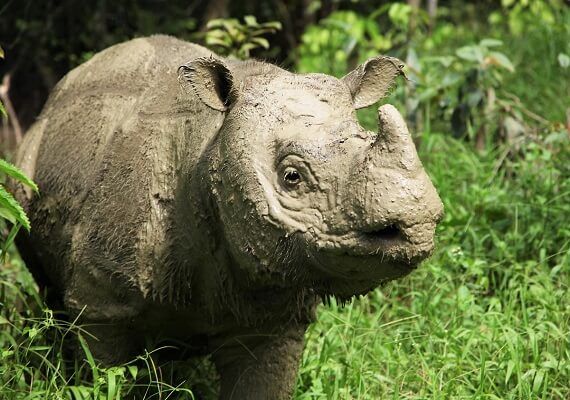Malaysia’s Last Male Sumatran Rhinoceros Has Died
There are fewer than 80 Sumatran rhinos living in the wild
/https://tf-cmsv2-smithsonianmag-media.s3.amazonaws.com/filer/59/74/5974ceae-d81a-431d-ba37-fef48742c5f4/plight_borneo_sumatran_rhino_2005_9.jpg)
Tam, Malaysia’s last male Sumatran rhino, died Monday, leaving just one sole survivor of the species—a female named Iman—living in the southeast Asian country. His passing, following close on the heels of the June 2017 euthanization of a 20-year-old female, Puntung, represents a significant blow to the two-horned creatures’ chances of long-term survival. Thanks to poaching and habitat loss, the species’ population now stands at fewer than 80 members, most of whom are scattered across the islands of Sumatra and Borneo.
According to environmental news site Mongabay, Tam’s keepers first noticed changes in the roughly 30- to 35-year-old rhino’s appetite and alertness toward the end of April. Although veterinarians and staff at the Tabin Wildlife Reserve, where Tam had resided since his capture in 2008, provided constant palliative care in the days preceding his death, the rhino eventually succumbed to worsening health complications.
Malaysian Tourism, Culture and Environment Minister Datuk Christina Liew tells Julia Chan of Malay Mail that Tam’s passing was likely linked with old age and multiple organ failure stemming from kidney and liver damage. His precise cause of death will remain unclear until an autopsy has been performed.
Previously, attempts to breed Tam, found wandering around an oil palm plantation in 2008, with Puntung and Iman (captured in 2011 and 2014, respectively) failed to produce viable pregnancies. As National Geographic’s Jason Bittel reports, researchers believe Puntung was rendered infertile by injuries inflicted by a poacher’s snare, as well as a failed pregnancy prior to her capture. Iman, on the other hand, suffers from an ailment common among female Sumatran rhinos, who can develop cysts and fibroids in their reproductive tracts if too much time passes without mating. Tam simply had low-quality sperm.
In a statement, Susie Ellis, executive director of the International Rhino Foundation, explains that conservationists turned to in-vitro fertilization, which would involve placing embryos in surrogate rhinos, after attempts to encourage natural reproduction proved unsuccessful. Unfortunately, Ellis says, such efforts “did not pan out for a variety of reasons.”

Still, it’s worth noting that Tam’s genome lives on in the form of preserved genetic material. Speaking with Chan of Malay Mail, Liew notes, “We hope that with emerging technologies at cell and molecular level, he may yet contribute his genes to the survival of the species.”
Sumatran rhinos once inhabited broad swaths of Asia, from the foothills of the Himalayas to Thailand, Cambodia, Vietnam and Indonesia. Weighing just 1,320 to 2,090 pounds, according to the World Wildlife Fund, the species is by far the smallest of the world’s five remaining rhino varieties.
Interestingly, National Geographic’s Bittel reports the biggest threat facing Sumatran rhinos is isolation. Small groups of rhinos living in the wild exist in fragmented pockets, making it difficult for males and females to link up and breed. Combined with the fact that Sumatran rhinos have a long gestation period of around 16 months, Live Science’s Laura Geggel explains, captive breeding programs become all the more essential.
“With logging, with roads for development, the patches of forest available are shrinking,” Cathy Dean, CEO of Save the Rhino International, tells BBC News’ Helen Briggs. “Frankly, it's hard for them to find each other to mate and breed successfully.”
Despite the species’ seemingly dire straits, there’s reason to remain hopeful. In fact, Briggs reports, experts believe as few as 20 unrelated Sumatran rhinos could hold enough genetic diversity to save their population from extinction. Moving forward, Ellis of the International Rhino Foundation says to Bittel, conservationists’ focus must be on “saving the remaining 80 Sumatran rhinos, using a combination of intensive protection and captive breeding, and working with local people to instill pride that the rhino is part of their biological heritage.”
Ellis concludes, “This is a battle we cannot afford to lose.”
/https://tf-cmsv2-smithsonianmag-media.s3.amazonaws.com/accounts/headshot/mellon.png)
/https://tf-cmsv2-smithsonianmag-media.s3.amazonaws.com/accounts/headshot/mellon.png)